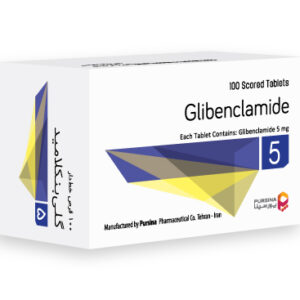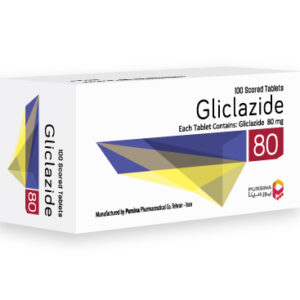Description
How Supplied:
Metformin film-coated tablets are presented as forms that containing 500 mg Metformin hydrochloride, 10 tablets per blister pack, 10 blisters with a leaflet in a box.
Category: Antihyperglycemic agent
Precautions:
– Regular visits to physician to check progress
– Discussing use of Alcohol
– Not taking other medications unless discussed with physician
– Preparing for and understanding what to do in case of an emergency
-Informing physician of Metformin therapy when medical examinations that require administration of contrast media are scheduled or when surgery is scheduled, Metformin should be discontinued before surgery or appropriate medical tests and may be reinstated 48 hours postprocedure if renal function is normal.
– Recognizing symptoms of lactic acidosis, such as diarrhea, fast and shallow breathing, severe muscle pain or cramping, unusual sleepiness, and unusual tiredness and weakness.
-Recognizing symptoms of hypoglycemia such as anxiety, behavior change similar to drunkenness, blurred vision, cold sweats, confusion, cool, pale skin, difficulty in concentrating, drowsiness, excessive hunger, tiredness and weakness.
-Recognizing symptoms of hyperglycemia such as blurred vision, drowsiness; dry mouth; flushed, dry skin; fruit-like breath odor; increased frequency and volume of urination; ketones in urine; loss of appetite, nausea or vomiting; tiredness; troubled breathing and unusual thirst.
– Knowing what to do if symptoms of hyperglycemia occur, such as checking blood Glucose and contacting a member of the health care team.
– Knowing what to do if symptoms of hypoglycemia occur, such as using Glucagon in emergency situation including when unconsciousness occurs, eating Glucose tablets or gel, sugar cubes, corn syrup or Honey, or drinking fruit juice, nondiet soft drink, or sugar dissolved in water, not eating foods high in fat.
Dosage and Administration: Usual adult dose: Antihyperglycemic agent: – Initial: Oral, 500 – 850 mg two times a day, taken with morning and evening meals. The daily dose may be increased by 500 mg at weekly intervals as needed. – Maintenance: Oral, 500 or 850 mg two to three times a day, taken with meals.
Usual adult prescribing limits: 3000 mg a day.
Usual pediatric dose: Antihyperglycemic agent: Children up to 10 years of age – Safety and efficacy have not been established. Children 10 years of age and over – Initial: Oral, 500 mg two times a day, given with meals. Dose increases should be made in increments of 500 mg weekly up to a maximum of 2000 mg per day given in divided doses.
Pregnancy and Breastfeeding: The medicine should only be administered if necessary and after medical advice.
Side Effects: Along with its needed effects, a medicine may cause some unwanted effects. Although not all of these side effects may occur, if they do occur they may need medical attention.
– Those indicating need for medical attention: incidence rare: Anemia, megaloblastic (tiredness, weakness); hypoglycemia (blurred vision, confusion; cool and pale skin; cold sweats; anxiety; nausea; fast heartbeat; headache; shakiness; drowsiness; excessive hunger; nightmares; unusual tiredness or weakness; nervousness; restless sleep; slurred speech); lactic acidosis (fast, shallow breathing; muscle pain; unusual sleepiness; unusual tiredness or weakness)
– Those indicating need for medical attention only if they continue or are bothersome: Incidence more frequent: Anorexia (loss of appetite); diarrhea, dyspepsia (stomachache); flatulence (passing of gas); headache; metallic taste; nausea; vomiting; weight loss.
Drug Interactions: Inform your doctor if you are taking any of the following medicines: Alcohol, Cimetidine, Amiloride, Calcium channel blocking agents, especially Nifedipine, Digoxin, Morphine, Procainamide, Quinidine, Quinine, Ranitidine, Triamterene, Trimethoprim, Vancomycin, Furosemide, Hyperglycemia and Hypoglycemia – causing medications.
Storage Store below 30˚C, protect from light and moisture. Keep out of reach of children.
Manufactured by pursina pharmaceutical Co. Tehran – Iran




